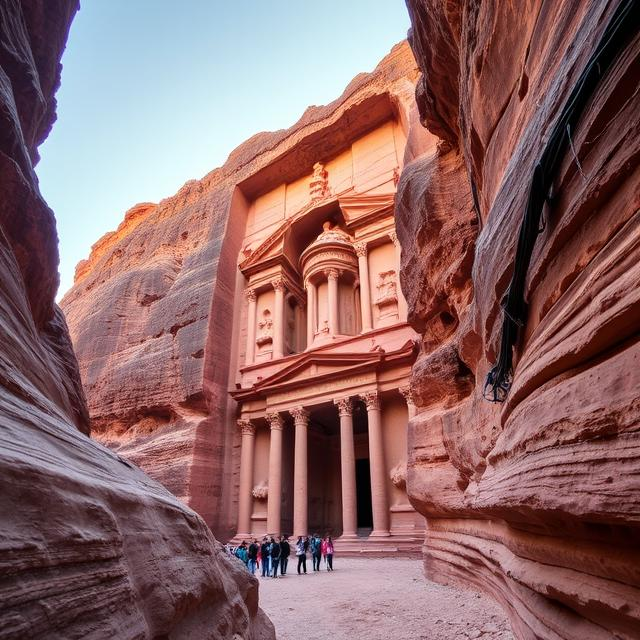Nestled in the heart of the Jordanian desert, Petra is one of the most captivating and awe-inspiring archaeological sites in the world. Often referred to as the “Rose City” due to the pinkish hue of its sandstone cliffs, Petra was once a thriving trade city for the Nabataeans in the 4th century BC. The city’s rediscovery in the early 19th century brought global attention to its hidden wonders, and today, it remains a UNESCO World Heritage Site that draws visitors from around the globe. For history enthusiasts and adventure seekers alike, Petra offers an unforgettable glimpse into an ancient civilization.
The most iconic feature of Petra is the Al-Khazneh or “The Treasury,” a stunning façade carved directly into the rock face. Standing at 40 meters tall, it is a breathtaking sight that often leaves first-time visitors in awe. The Treasury is just one of many impressive structures, but its grandeur is what makes it the face of Petra. To reach this monument, tourists enter through the narrow Siq, a winding canyon that serves as the main entrance to the city. The Siq, with its towering walls and dramatic curves, feels almost otherworldly, and as you emerge into the open space, the Treasury appears like a treasure waiting to be discovered.
Beyond the Treasury, Petra is home to an array of incredible structures, including the Monastery (Ad Deir), another monumental structure carved into the mountainside. Reaching the Monastery requires a challenging but rewarding hike up hundreds of steps, but the view from the top is worth every effort. The expansive view of Petra’s rugged landscape and the Monastery’s impressive façade make it one of the most memorable sights in the entire city. The journey to the Monastery offers a perfect opportunity to appreciate the vast scale of Petra, as the city’s ruins stretch across the desert in every direction.
In addition to its impressive architecture, Petra boasts a fascinating cultural history. As the capital of the Nabataean Kingdom, the city was a hub for trade, especially for incense, spices, and silk. The Nabataeans were skilled engineers, and their expertise is evident in the advanced water management systems they developed. Visitors can explore ancient tombs, Roman-style theatres, and temples, all of which reflect the diverse influences that shaped Petra over the centuries. The intricacy and creativity of the rock-cut architecture highlight the ingenuity of the Nabataean people.
One of the best ways to explore Petra is by walking, as the site is vast and diverse. There are also horse-drawn carriages available for those who prefer a more leisurely tour, although they’re generally reserved for shorter distances. For those looking to discover Petra’s full expanse, guided tours offer insight into the history and cultural significance of each monument. For adventure seekers, there are hiking trails that lead to some of the more remote and less-visited parts of Petra, providing a sense of solitude and a deeper connection to the ancient city.
Visiting Petra is not just about seeing the structures; it’s about experiencing the timeless spirit of a place that has stood the test of time. Whether you’re marveling at the grandiosity of the Treasury, trekking to the Monastery, or exploring the lesser-known tombs, Petra offers a truly unique experience. The beauty, mystery, and history of this ancient city make it one of the most unforgettable destinations for anyone traveling to Jordan or the Middle East. It’s a journey through time that’s bound to leave an indelible mark on every traveler who walks its ancient pathways.

Leave a Reply